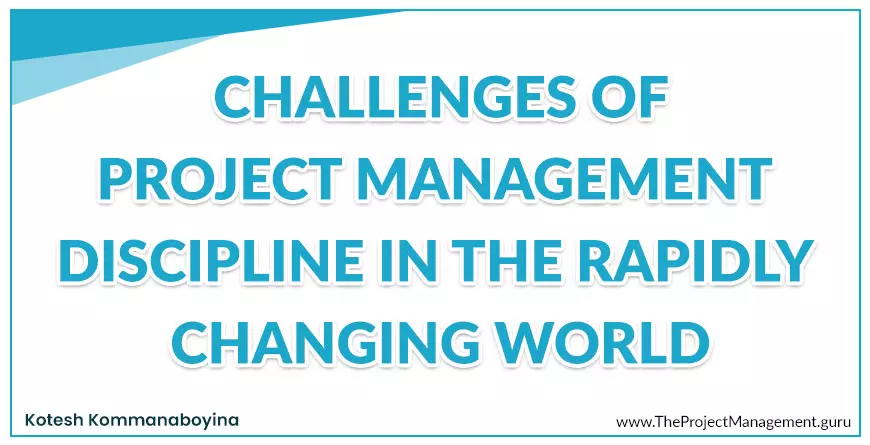
TheProjectManagement.Guru - Challenges of Project Management discipline in the rapidly changing world
Project Management discipline is the process & activity of planning, organizing and controlling resources, procedures & protocols to achieve specific goals in scientific or daily problems.
The primary restrictive constraints are time, budget and quality. The additional is based on optimization of necessary inputs’ allocation and its integration to the correspondence with pre-defined objectives.
There are different methods of implementation of project management procedures, but nowadays in drastically developing world all that we face is the problem of risk and lack of time.
The traditional methodology includes: project environment analysis, project phrasing and its planning, technical (theoretical) project implementation and then the control of project implementation.
According to this procedure the mistake at any given stage will cause a great threat of breakdown of the entire project. In such rapidly developing pace of world – the long-term project environment analysis in most instances is self-defeating. However, the inculcation of constructive analysis could minimize the risk.
Besides the traditional procedure with the high-risk rate, there are a few modern procedures that were implemented because of the world development. These are: PMI, IPMA, PRINCE2 and MSF (this one is only for IT-projects) standards.
The PMI procedure besides the requirements determination and identification of objectives, includes the adaptation of the project to the stakeholder requirements.
Such a designated target can provide proper analysis of risk and the requirements meeting, so the project success rate proportionally increases with the precision of aims (targets) made initially. This procedure is more viable than orthodox one, despite the absence of theoretical project implementation stage.
The PRINCE2 procedure has got the most split structure which includes 8 steps. The distinctive feature of PRINCE2 is the overall analysis. It means that this procedure offers a few different results according to the implementation circumstances. In addition, the procedure is heavily embedded into the project environment analysis, making it quite familiar to orthodox one.
Besides these all-general problems such as unrealistic deadlines, failure to manage risk rate, external resources engagement, inaccurate identification of objectives, and the scope changes – there are many problems which exactly depend on the insufficient team skills and the lack of accountability.
The lack of accountability endangers the project to collapse even with the proper dispositions. In very developing world the stability of the economy is the main goal of either business sector or management sphere.
The high risk of economic meltdown derives worst challenge to the success of projects. The insufficient team skill is a problem #1 in the developing world. The number of new technology breakthrough increases every day, so the professional of the 20th century could be the newbie in nowadays projects.
In addition, the index of world development has not reached its top since the year 2010 and, probably, won’t reach it at all. At last, the IT-technologies captivated all of the possible markets, so requirement of the special software for project management is only the matter of time.
EA Capability Leader spearheads the work performed to develop an EA Capability within an organization.
Organizations operating in highly secure environments, such as the governments, military or defense industry, rely…
Weighted Shortest Job First (WSJF) is a prioritization model used to sequence work for maximum…
The US Government agencies are subject to a wide variety of computing standards designed to…
Do not waste your time with explanations. People only hear what they want to hear.…
Who Is A Stakeholder? A party that has an interest in an enterprise or project.…
This website uses cookies.